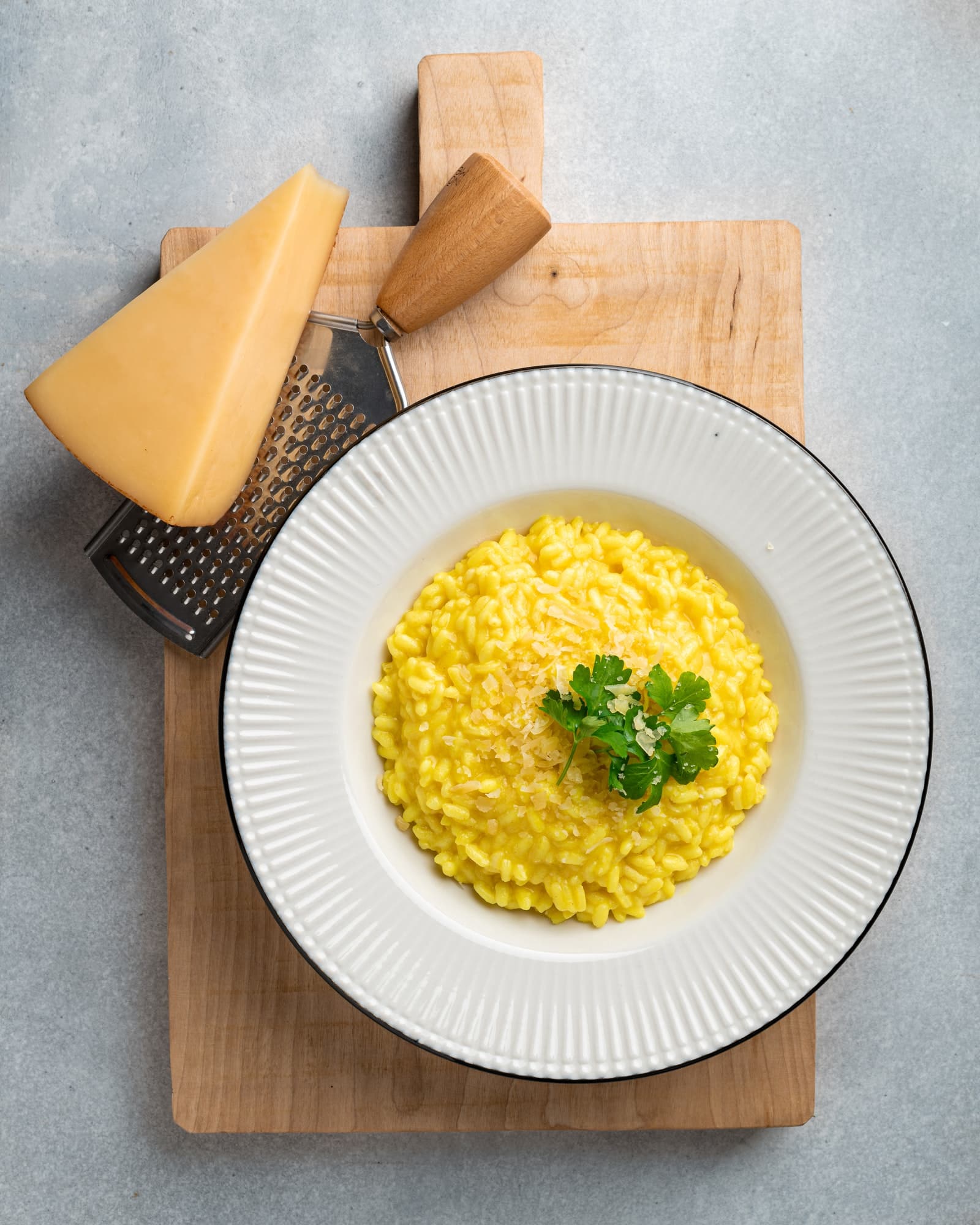Can You Craft a Perfectly Smooth and Creamy Gourmet Risotto?

Risotto, the quintessential Italian dish, is a great crowd-pleaser but can be daunting for the uninitiated. Fear not though, you can take the leap and make your very own risotto at home that will have your friends and family asking for seconds. We offer you a comprehensive guide on how to craft a perfectly smooth and creamy gourmet risotto, a dish that’s going to transport your taste buds straight to northern Italy.
Understanding Risotto and its Ingredients
Risotto isn’t just any rice dish. It’s a symbol of Italian cuisine that celebrates simplicity, quality ingredients, and the art of cooking itself. The beauty of risotto is its versatility – you can customize it with virtually any gourmet ingredient, from truffles to seafood, but the silky, creamy texture remains unchanged.
En parallèle : How to Master the Art of Gourmet Dumplings with Homemade Dough?
At the heart of every risotto recipe are three core ingredients: rice, stock, and cheese. The rice used in risotto is a short-grain variety that is chalky in texture, allowing it to absorb a lot of liquid while maintaining its shape. Arborio, Vialone, Nano, and Carnaroli are some of the popular options.
The stock, often chicken, vegetable, or seafood, is added gradually to the cooking rice, creating a creamy, starchy sauce. Lastly, but perhaps most importantly, is the cheese, usually parmigiano-reggiano or pecorino romano, which is stirred in at the end to give risotto its luxurious creaminess.
Cela peut vous intéresser : Can You Create a Signature Gourmet Pasta Dish with Seasonal Vegetables?
The Art of Cooking Risotto
Cooking risotto is a labor of love. It demands constant attention and continuous stirring to release the starch and create the signature creaminess.
To start, you’ll need to heat some butter in a large, wide pan. Add in finely chopped onions, allowing them to soften and turn translucent. Then, it’s time for the rice. It is crucial to toast the rice in the pan with the onions for a few minutes until it becomes translucent around the edges. This step, known as the tostatura, seals the grains and helps them absorb the flavorful broth without becoming mushy.
Next, you’ll add a splash of white wine and let it evaporate completely. This deglazing step helps lift any flavorful bits stuck to the pan and also gives an acidic balance to the dish.
Now, it’s time for the main attraction: the broth. For a standard risotto, you’ll need about four times the amount of broth as rice. It’s essential to have your broth hot and ready, adding it in ladleful by ladleful, stirring continuously. As the rice absorbs the broth, it releases starches that give risotto its creaminess.
Mastering the Creaminess
The creaminess of the risotto isn’t just about the addition of cheese at the end. It’s about the process, the constant stirring, and the love you put into it.
When you’re stirring, you’re not just moving the spoon around the pan. You’re helping the rice grains rub against each other, which helps to release more starch. This process is key to a creamy risotto.
Don’t forget to take your time. Although it may be tempting to crank the heat and speed up the process, a good risotto needs time to develop its flavors. Each ladleful of broth should be almost entirely absorbed before you add the next one.
The final touch of creaminess comes with the addition of butter and cheese at the end. This stage, known as the mantecatura, is when the risotto reaches its ultimate creamy consistency.
Adding Flavor with Gourmet Ingredients
Once you’ve mastered the basic risotto, it’s time to get creative and add some flavor. One popular choice is mushrooms, which add a delicious earthiness to the risotto. Start by sautéing your mushrooms in another pan. Once they’re cooked and the risotto is done, stir them in, making sure to add any juices left in the pan.
For a seafood risotto, you can add a mix of shrimp, scallops, and mussels. Make sure to cook your seafood separately and add it to the risotto at the end to prevent overcooking.
Whichever ingredients you choose, remember to balance the flavors. The additions should complement the risotto, not overpower it. After all, the star of the dish is the risotto itself, not the add-ins.
The Perfect Risotto: Practice Makes Perfect
Remember that like all good things, making the perfect risotto takes time and practice. Even if your first batch doesn’t turn out exactly as you’d hoped, don’t get discouraged.
Keep refining your technique, adjusting the heat, stirring more (or less), and experimenting with different ingredients. With each attempt, you’ll get closer to crafting that perfectly smooth and creamy gourmet risotto. After all, in the world of cooking, practice doesn’t just make perfect, it makes delicious.
With this guide, you’re well on your way to mastering the art of risotto-making. So, have fun with the process, embrace the stirring, and before you know it, you’ll be serving up a gourmet risotto that’s nothing short of perfect. So, what are you waiting for? It’s time to get cooking!
Gluten Free Delicacy: Risotto Variants and Dietary Preferences
Risotto, a beloved dish by many, is also an exceptional choice for those seeking gluten-free options. The main ingredient, risotto rice, whether it’s Arborio, Vialone, Nano, or Carnaroli, is naturally gluten-free. This makes risotto a versatile dish that can be enjoyed by almost everyone.
However, when crafting your risotto recipe, it’s crucial to pay attention to all ingredients used, ensuring they suit your dietary preferences. For instance, traditional risotto often includes butter, but you can substitute it with olive oil for a dairy-free version. Similarly, vegetable broth can replace chicken broth for a vegetarian or vegan variant. Just remember, each change may slightly alter the taste and creaminess of your risotto.
Now let’s talk about flavors. Mushroom risotto is a classic choice that pleases many palates. The earthy tones of the mushrooms pair beautifully with the creamy texture of the risotto. Remember to sauté your mushrooms separately and add them towards the end of your risotto cooking time. This practice ensures that the mushrooms retain their texture and flavor.
Also, never forget the value of salt and pepper. These basic seasonings can dramatically enhance the flavors of your risotto, especially when added judiciously throughout the cooking process.
Serving and Enjoying Your Risotto
Once your creamy risotto has finished cooking on low heat for the allotted time (usually around 18 to 30 minutes), it’s time to serve and enjoy. Risotto is best served immediately while it’s still warm and creamy.
Start by ladling your risotto into warm serving bowls. This ensures the risotto maintains its temperature. Then, add a final flourish of grated parmesan over the top. This last-minute addition ensures that the cheese melts just enough to blend seamlessly with the dish, enhancing its creamy texture and adding a savory depth of flavor.
When serving, remember that risotto is usually quite rich, so portion sizes don’t need to be enormous. A small to medium-sized bowl of this delicious, creamy dish will satisfy even the hungriest of diners.
As a final touch, consider serving a light, crisp salad or some crusty bread on the side. These accompaniments help balance the creaminess of the risotto and provide a contrasting texture.
Wrapping Up: Your Journey to Mastering Risotto
This journey to mastering the art of risotto-making is just beginning. With this comprehensive guide, you’ve learned all about the core elements of a risotto recipe, the importance of constant stirring on low heat to achieve that desired creamy texture, the variants catering to different dietary preferences, and finally, the serving and enjoyment of your homemade, creamy risotto.
Remember, crafting a perfect risotto takes time and patience. However, with practice and a bit of creativity, you’ll soon be able to whip up a gourmet risotto that not only satiates your taste buds but also impresses your guests.
Whether you prefer a classic mushroom risotto or wish to experiment with your own unique additions, keep in mind that the quality of your ingredients will significantly impact the end result. So, choose your risotto rice, olive oil, broth, white wine, and parmesan cheese carefully.
Finally, enjoy the process, have fun with it, and before you know it, you’ll be crafting a risotto that’s creamy, flavorful, and nothing short of perfection. Remember, in the kitchen, the journey is just as important as the destination. Happy cooking!
